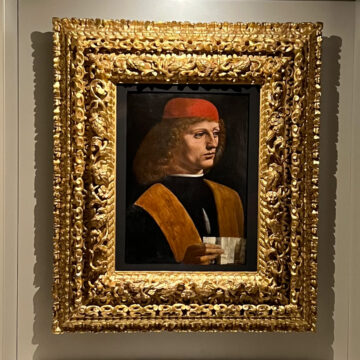Visit the Pinacoteca Ambrosiana to see the only Leonardo Da Vinci panel painting in Milan, his Codex Atlanticus collection of drawings, and a variety of further artworks by famous artists.
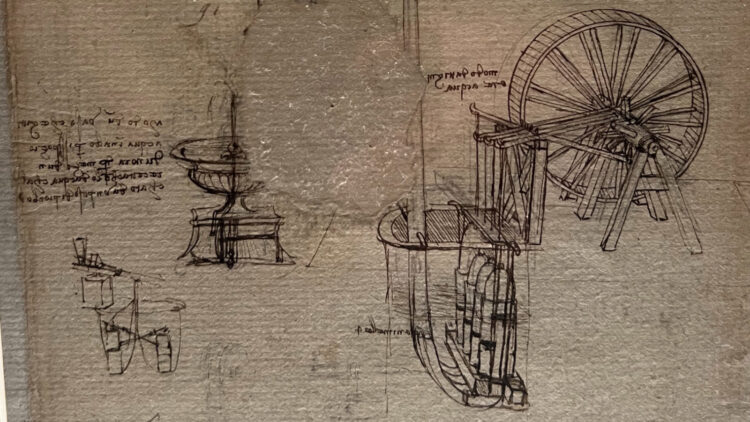
Leonardo da Vinci’s Portrait of a Musician and the Codex Atlanticus with over a thousand sheets of his drawings, sketches, and notes are for many visitors the main attractions of the Pinacoteca Ambrosiana in Milan. However, this museum has many further artworks on display including paintings by Caravaggio, Titian, Botticelli, and Brueghel, as well as the original cartoon for Raphael’s famous School of Athens fresco. The Pinacoteca Ambrosiana is relatively small making it easy to see the top works in an hour if time is pressing. Buy time-slot reservation tickets online and save on a combination ticket with the crypt of the San Sepolcro church.
Pinacoteca Ambrosiana Art Museum in Milan
The Pinacoteca Ambrosiana is a relatively small art museum of around two dozen rooms located near the Duomo in Milan. The core of the collection is works donated by Cardinal Federico Borromeo who established the museum in 1618. The 15th to 17th-century paintings are still the most interesting works in the museum although it now has art up to the present on display.
The building itself is also interesting — pick up a free map at the entrance. Visitors follow a basic route — from the entrance, up to the first floor with the foundation paintings and related period art. From here, visitors enter the Galbiati Wing and may either go down directly to the Da Vinci section or continue the gallery tour with interesting but less important works.
The rooms of the Galbiati wing are richly decorated with most connected to the loggia with views of the courtyard with several sculptures and the choir of the San Sepolcro church. After touring the second floor of the Galbiati wing, descend to the ground floor of the Biblioteca Ambrosiana building with the Leonardo da Vinci painting, the old library, and the Codex Atlanticus in the Sala Federiciana.
Leonardo Da Vinci Art in the Pinacoteca Ambrosiana in Milan
Leonardo da Vinci is the main draw for many visitors to the Pinacoteca Ambrosiana, so although these works are seen last, even on an express tour using shortcuts, these are described here first. Leonardo da Vinci spent considerable time working and living in Milan. but his only painting in Milano, other than The Last Supper, is the panel painting Portrait of a Musician in the Pinacoteca Ambrosiana art gallery and museum. Here it is one of the star attractions together with the Codex Atlanticus — the largest collection of Leonardo’s drawings, sketches, and notes.
Leonardo da Vinci painted the Portrait of a Musician (Ritratto di musico) in the 1480s while in the employment of the Duke of Milan, Ludovico Sforza. For centuries, the subject of the painting was considered to be Ludovico but cleaning the portrait in the early 20th century revealed the sheet of music at the bottom. For the past century, scholars have argued about who the musician is supposed to be but we’ll probably never know for certain. The persons proposed thus far are not in any way currently well-known musicians.
The relatively small work of 44.7 by 32 cm (18″ by 13″) is an oil painting on a walnut wood panel and was probably intended for private use. The work was influenced by early Netherlandish portraits rather than the prevalent Italian style of painting portraits in profile. Most scholars accept that Da Vinci painted at least the face but some question the rigid body of this painting that was left partly unfinished like so many of Leonardo’s other projects.
Codex Atlanticus of Da Vinci Designs
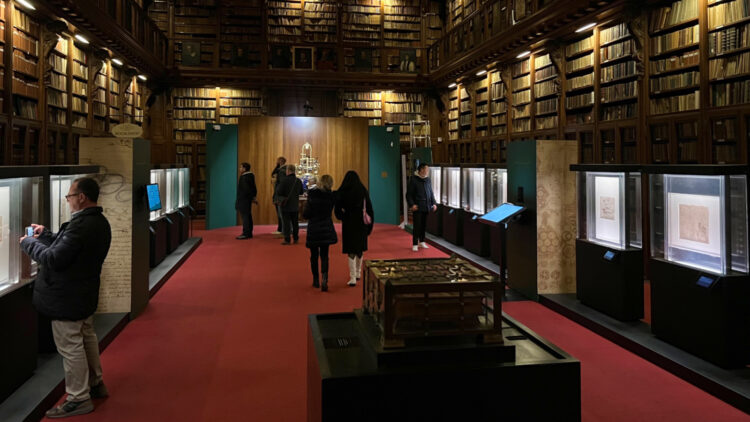
The Codex Atlanticus consists of 1,119 pages of drawings, sketches, and notes by Leonardo da Vinci that were collected in this album by Pompeo Leoni. The name is simply that of the large paper size that was at the time mostly used for atlases.
The Codex Atlanticus was donated to the Biblioteca Ambrosiana in 1637 and has mostly been locked in a special case, although it detoured like so many other artworks through the Louvre during the Napoleonic era.
A copy of the original codex leather binding is on display in a special lockable cage in the Sala Federiciana. Since 2008, each folio of the codex is in a special passe-partout to ensure its preservation and also make it possible to exhibit them relatively safely.
Only a few sheets are displayed in the old reading room of the library but anyone may consult the complete codex for free online. The works are classified into five subjects: geometry and algebra; physics and natural sciences; tools and machines; architecture and applied arts; and human sciences.
Art Highlights in the Pinacoteca Ambrosiana in Milan

Other than the Da Vinci works at the end of the museum tour, the 15th to 17th-century paintings in the first ten rooms or so on the first floor are arguably the most interesting to many visitors. These include the original foundation paintings as well as similar very high-quality art.
Some of the top works displayed in the Pinacoteca Amrosiana include:
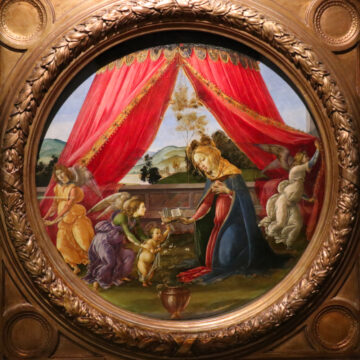
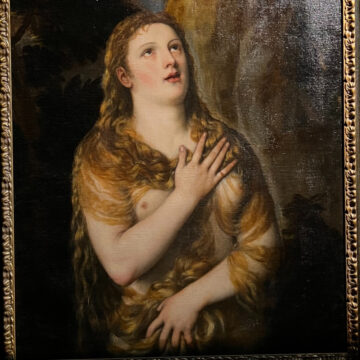
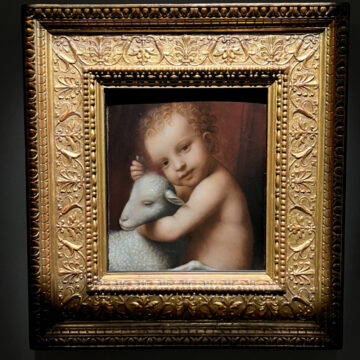
- Caravaggio: Basket of Fruit
- Titian / Tiziano Vecellio: Adoration of the Kings, Man in Amour, Mary Magdalene, The Placing of Christ in the Sepulchre
- Veronese: The Holy Family with Saint John, Tobias, and Archangel Raphael
- Bernardino Luini: Holy Family with Saints Anne and John the Baptist, The Infant Jesus with a Lamb
- Botticelli: Madonna of the Pavilion
- Bernardino Betti detto il Pinturiccho: The Madonna and Child with a Worshipper
- Bramantino: Madonna of the Towers, Adoration of the Child
- Jan Brueghel the Elder: Allegory of Water, Allegory of Fire, Vase of Flowers, Mouse with Rose
- Giovanni Ambrogio Figino: Portrait of Saint Charles Borromeo

An entire room is used to display Raphael’s Cartoon for the School of Athens. Whereas this famous fresco in the Vatican was mostly painted by his assistants, Raphael’s own hand drew the cartoon.
Galbiati Wing of the Pinacoteca Ambrosiana in Milan
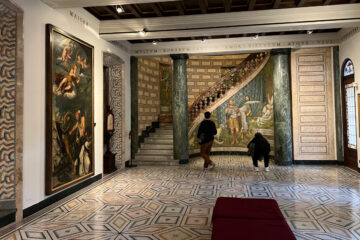
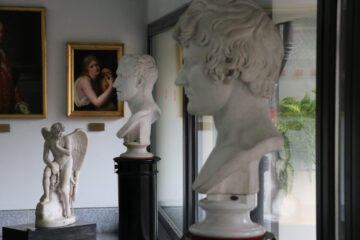
The art in the Galbiati wing that follows after the main galleries are of less famous artists and no works could really be termed must-sees. It is easy to enjoy the paintings, sculptures, and applied arts here by simply studying whatever catches the eye. (Visitors with limited time could use the stairs from room 8 down to the Da Vinci room — even the museum itself is somewhat unenthusiastic about these rooms and recommends visitors with less than two hours skip most of the Galbiati wing.)
Before rushing on, have at least a quick look at the applied art items in rooms 8 and 9 that include a variety of caskets, clocks, table centerpieces, and scientific instruments worth studying close up for incredible details. Two famous items are the lock of hair of Lucrezia Borgia — Lord Byron claimed to have stolen a few strands — and a pair of gloves that Napoleon Bonaparte wore at the Battle of Waterloo.
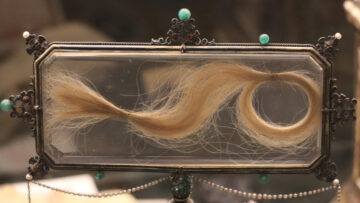

In many of the rooms the decorations, frescoes, ceilings, and even floors are the more interesting than the displays but a few artworks worth seeking out include:
- Giuseppe Bertini: Dantesque window
- Gerolamo Mazzola Bedoli: The Annunciation
- Isaac Soreau: Still Life with Fruit
- Hendrick Avercamp: Winter Landscape with Skaters
- Ambito di Francesco Albani: The Wedding of Peleus and Thetis
The final room before descending has sculptures including two self-portraits by the two most famous sculptors of the early to mid-19th century: Canova and the Dane Bertel Thorvaldsen, who spent most of this life working in Rome (but the Thorvaldsen Museum in Copenhagen has his full oeuvre on display).
Da Vinci in the Pinacoteca Ambrosiana in Milan
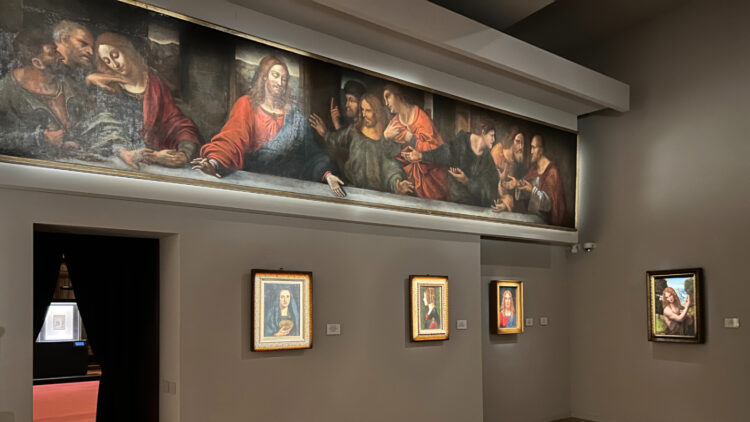
The final rooms of the visit are on the ground floor of the Biblioteca Ambrosiana building. The Portrait of a Musician is in the Aula Leonardi together with paintings by Leonardesque artists and copies of a few works by Leonardo made for studying, or as backups in case the originals were lost or damaged, as the Last Supper was already fading within years of its creation. These works include:
- Ambrogio de Predis: Portrait of a Lady
- Salai: Head of Christ the Redeemer
- Gian Giacomo Caprotti: Saint John the Baptist
- Bernardino Luini (1480-1532): Fresco of Christ Crowned with Thorns
- Andrea Bianchi detto il Vespino: Copy painted between 1611 and 1616 of the people in The Last Supper.
The Sala Federiciana is the historic reading room of the Biblioteca Ambrosiana. This library has several very important works and originals but few are on display due to the fragility of the documents.
A large copy of the original Codex Atlanticus binding is inside the locked frame that once housed the original folios. A few pages are on display on a rotating basis while the full codex may also be studied online for free.
Pinacoteca and Biblioteca Ambrosiana in Milan
Opening Hours and Tickets
The Pinacoteca Ambrosiana is open Thursday to Tuesday from 10:00 to 18:00. It is open on Wednesday too during some holidays. (The Biblioteca has different hours for students but the Da Vinci items here are seen as part of the Pinacoteca visit.)
Admission tickets are €15 for adults, €10 for students and children 15 to 18, and €5 for children 6 – 14 years old. Online timeslot reservations have a small surcharge — well worth it during busy periods. Discounts may be given for combination tickets with the adjacent San Sepolcro Crypt or with the Duomo. The Milan City Pass is accepted.
The audio guide is handy — cheaper (and better sound quality) if using your own earphones. The reasonably-priced official guided tours are infrequent but small group or private tours are also available.
Many Da Vinci sights in Milan are seen on guided tours that include the Last Supper also includes visiting the Pinacoteca Ambrosiana.
Transportation to the Pinacoteca Ambrosiana in Milan
Getting to the Pinacoteca Ambrosiana from most parts of central Milan is easiest by walking. From Via Orefici go down Via Cesare Cantu and the entrance to the Pinacoteca on Piazzo Pio XI is immediately visible two blocks down. Trams 12, 14, and 16 stop here at Orefici/Cantù just a block from the museum entrance. Duomo is generally the easiest metro stop.
The exit from the museum is at the back of the building on Piazza San Sepolcro — turn right to return to the entrance if needing to collect a bag or coat. Admission to the San Sepolcro church is free but the crypt is charged for — cheapest in combination with the Ambrosiana.
More Tips on Milan Sights and Tickets
- Top Leonardo da Vinci Sights and Art to See in Milan
- The Last Supper by Leonardo Da Vinci:
- Visit Chiesa di Santa Maria Delle Grazie — admission to the church next to The Last Supper Museum is free.
- Visit the Free San Maurizio Church — endless Renaissance frescoes in the “Sistine Chapel of Milan”
- Visit the Pinacoteca Ambrosiana to See Leonardo Da Vinci’s Musician Painting and the Codex Atlanticus.
- Visit the National Museum of Science and Technology Leonardo da Vinci
- Milan Duomo Complex:
- Cheapest Public Transportation to Milan Malpensa Airport (MXP).
- Book luggage storage in advance — close to transportation hubs is generally the better option.
- Book Last Supper Tours at Viator.
- Book Guided Tours for the Duomo, Last Supper, and other sights in Milano from Get Your Guide.
- Buy Admission Tickets for the Duomo and top sights in Milan from Tiqets.
- Buy Milan Guidebooks at Amazon.
